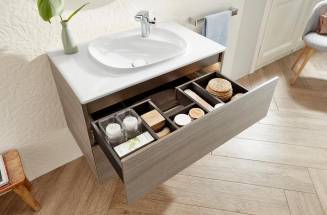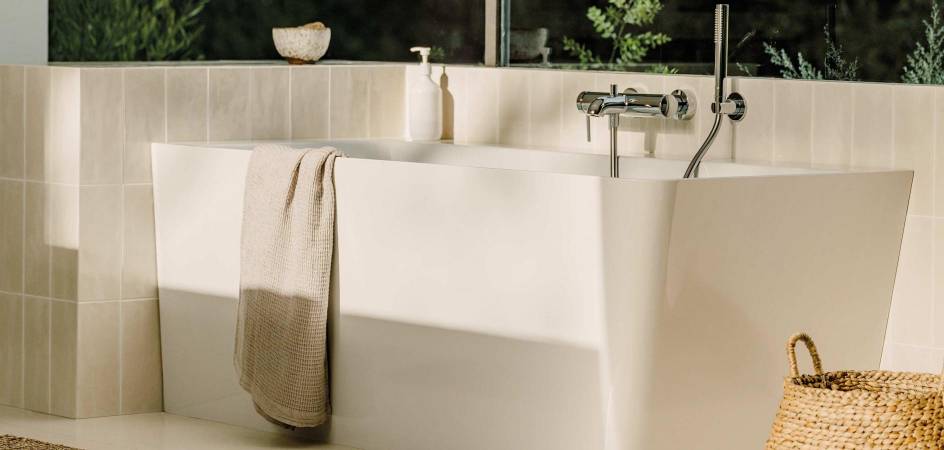
Different bath materials: How to choose the right bathtub
You may think that all baths are made the same way, and that it’s just shape, size and colour you need to choose, but there’s more to consider than that. The type of material you choose, whether you have a small bath, roll top bath or freestanding bath, has to suit your wants and needs, just as much as the design. Here we look at what’s available, to help guide you through the options.
Acrylic

(Pictured: Virginia freestanding acrylic bath, L90 floorstanding bath filler)
Possibly the first material you think about when it comes to baths, thanks to its affordability and ease of use – it’s lightweight, simple to install and can easily be formed into different shapes and sizes. Plus it retains heat well whether you have a small bath or a freestanding bath. It’s made by being vacuum formed and then reinforced with fibreglass to make it extra durable. Although it can mark and scratch easier than other materials, it’s fairly easy to repair if chips or cracks appear, allowing you to extend the life of the bath.
Enamelled steel
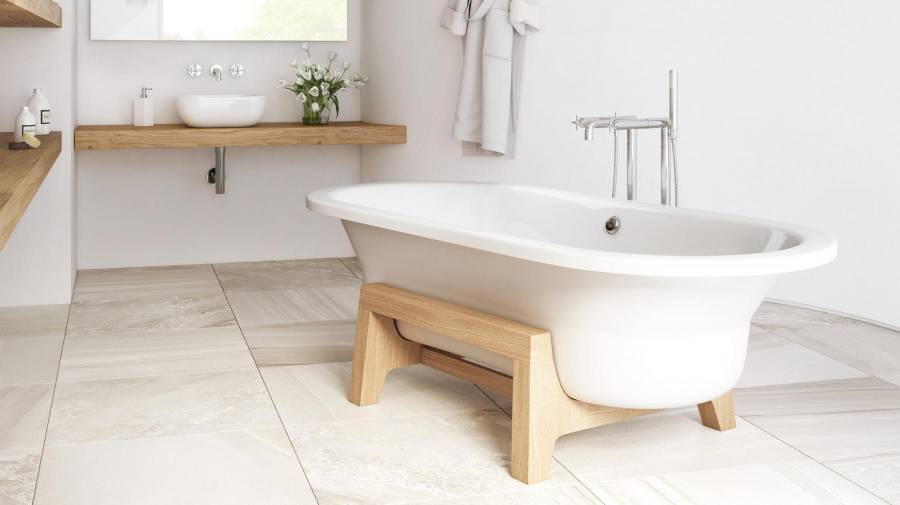
(Pictured: Art Plus freestanding steel bath, Loft floorstanding bath filler)
Another affordable option that’s lightweight and durable. It’s easy to install, with most opting to either recess the bath or add a bath panel, although there are freestanding designs to choose from as well. If the enamel chips, it’s relatively easy to fix, giving it more longevity. You would be forgiven for thinking that a steel bath sounds a bit chilly, but it heats up very quickly, so you won’t feel any coldness when you get in the tub. However, its heat retaining properties are not as great as some other materials.
Cast Iron
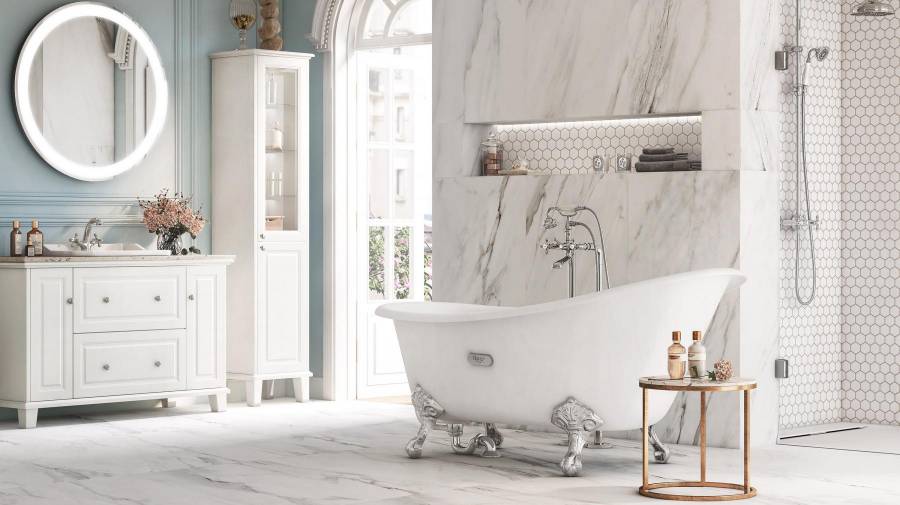
(Pictured: Carmen freestanding cast iron bath with eagle feet, Carmen floorstanding bath filler)
Having a cast iron bath is the dream for many bathroom renovators, and it is pretty luxurious thanks to its elegant appeal – it makes the perfect roll top bath. You often hear of people reclaiming and recovering old cast iron tubs, and that’s because they are extremely durable and can have a long lifespan if looked after. Cast iron has great heat retention, perfect if you enjoy a long soak, but it’s extremely heavy. You will need to consider extra floor support depending on where it’s being installed, and how you’re going to get it to its destination.
Surfex®
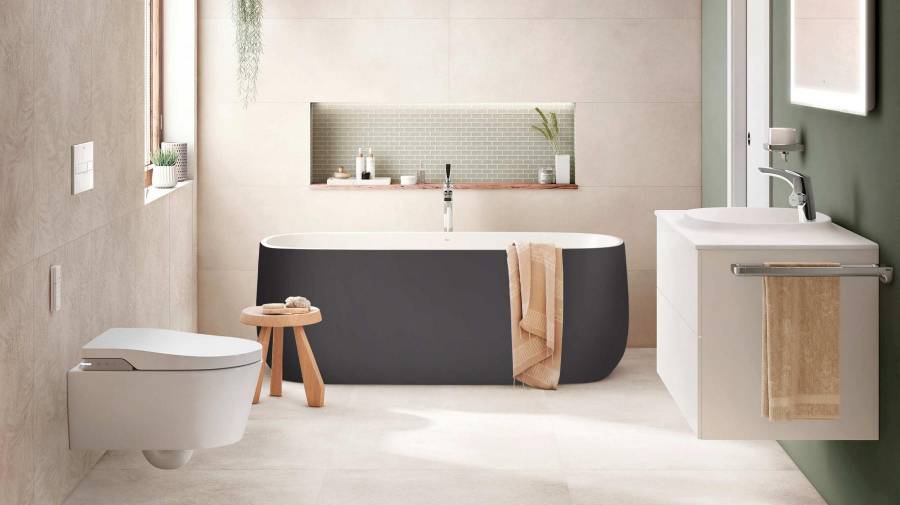
(Pictured: Beyond Surfex® bath, Onyx, L90 floorstanding bath shower mixer)
An innovative material developed by Roca, Surfex® can be used for many elements in the bathroom, but is ideal for creating bathtubs, whether you need a small bath or would love a freestanding bath. Made from a combination of organic materials and resins, it’s possible to create all kinds of shapes including sharp angular lines or smooth curves, with no joins. With its soft texture it has a luxurious feel and makes a beautiful freestanding bath. Surfex® is excellent at maintaining water temperature and importantly has anti-slip properties. It’s also resistant to chemical agents and won’t fade or discolour from UV light.
Stonex®
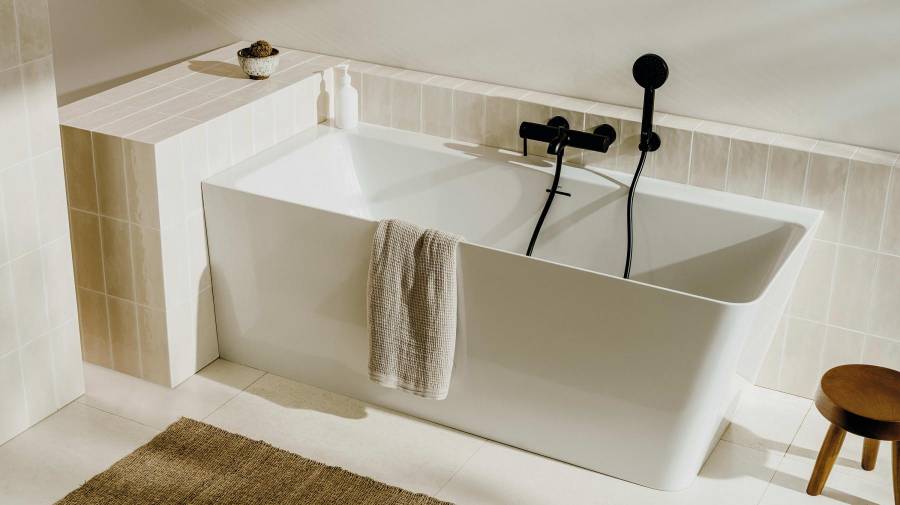
(Pictured: Ona Stonex® asymmetric left corner bath with integrated panel, Ona bath shower mixer in Titanium black)
A composite material inspired by nature, Stonex® has the look and feel of stone. Always warm to the touch, you won’t get any cold spots when you step into the tub, and with an anti-slip surface imprinted on the floor, you can really relax. This moldable material can create seamless designs, whether rounded or straight lines and is another fantastic option for a freestanding bath. Stonex® is extremely durable – hard wearing and impact resistant, as well as resistant to UV light.
Taking care of your tub
Whichever material you choose, and whatever design you go for, whether it’s a roll top bath or small bath, taking care of it is key to making it last. Always clean your bath, whatever the material, using non-abrasive cleaning products, to help extend their life. For further advice, please refer to the product care information here.






